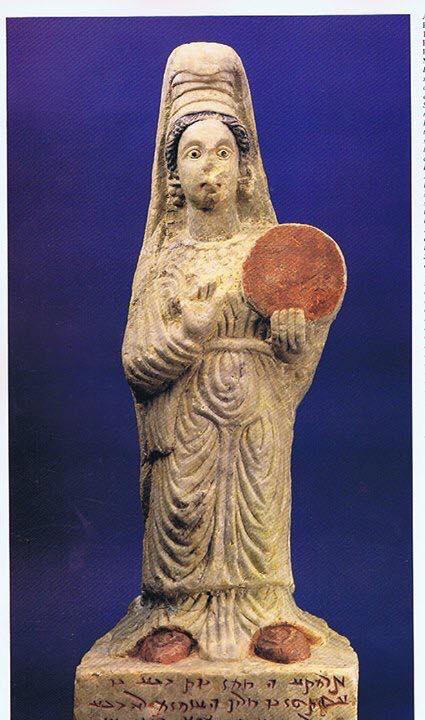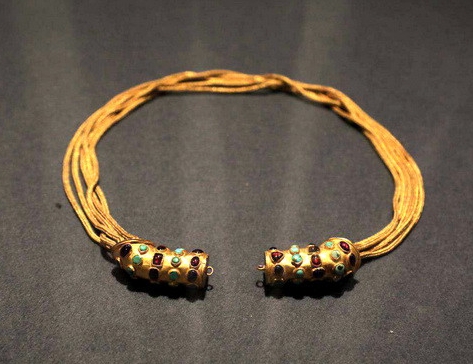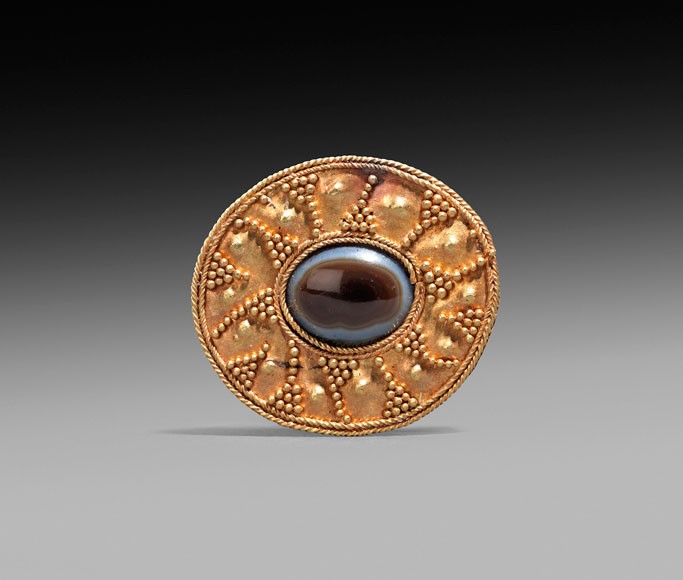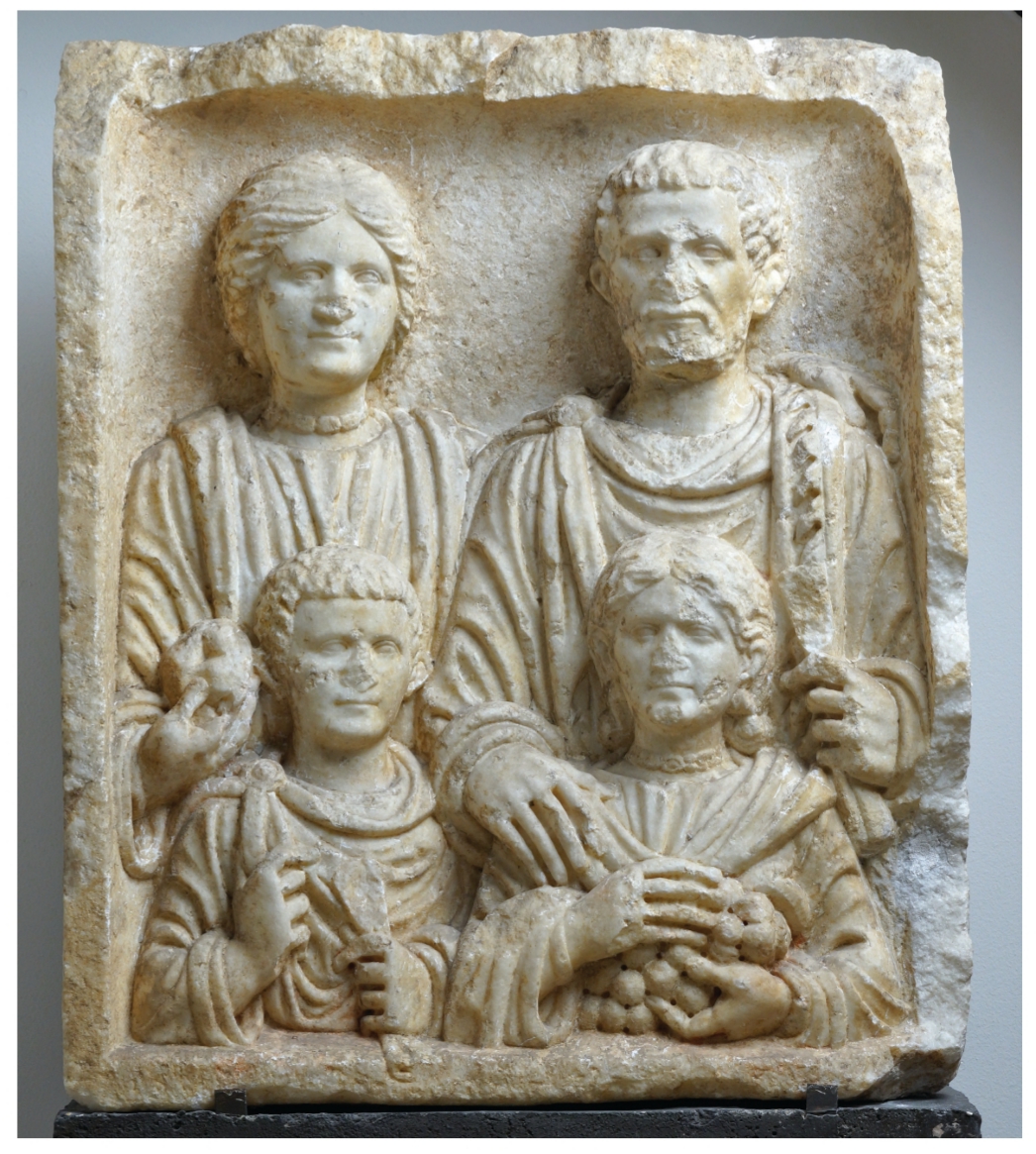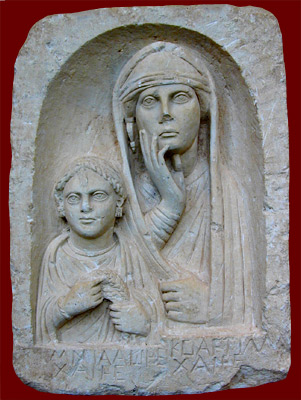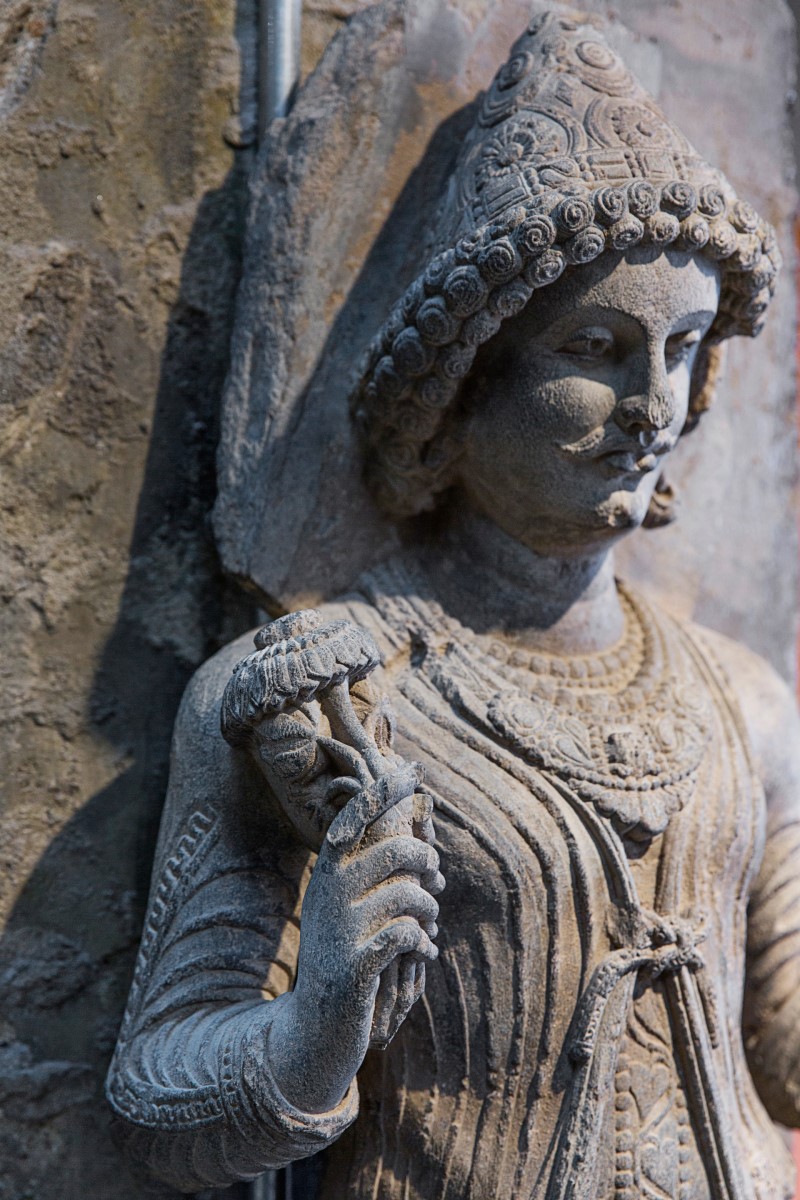
Kushan, Huvishka. Circa CE 152-192
Compare to Hatra rulers and two sarcophagi from Palmyra museum garden.


Notice the tying on the right arm!
Kushan, Huviska (?)
Statues from a non-Buddhist dynastic temple at Surkh Kotal, near Pul-i-Khumri, the capital of Baghlan Province, Bactria, Afghanistan.
Only three fragmentary sculptures remained in a recognizable form. The central figure has been identified as King Kanishka because analogous features appear on King Kanishka’s gold coins.

The headless statue of King Kanishka is 132 cm high. Dates around the 2nd century C.E.




Broken statue of Kanishka, with a dedicatory inscription in Brahmi Script, Mathura Museum, India [Museum no. 12.213.]
The inscriptions reads: Maharaja Rajatiraja Devaputro Kanisko, the great king, king of kings, the son of god, Kaniska [source]

Statuette of donor. According to Meunié, Shotorak, pl. XXIX, 90. [D. Schlumberger]

Images, Inscriptions and Viṣṇuism – The story of the archaeological site of Hund, Gandhāra https://www.researchgate.net
Marble sculpture illegally dugout from the site Hund, ancient Udabhandapura, Gandhara.
“The head, lower legs and right hand of the figure is missing. It is in white marble and is nicely made but its identification still poses a problem. The figure is wearing a close-fitting long upper dress which hangs above his knees. The brim of the dress is with dented design. He is also wearing different kind of jewelleries: a girdle, a neck ornament, ear ornaments and probably a bracelet.
The girdle is worn above his thigh and is decorated with square and round objects. The neck jewellery is flat and is with beaded designs. The ornament which hangs to the left ear of the figure is in floral design. He probably also wears bracelets. His right hand is shown brought towards his shoulder while in his left folded hand he is carrying an unclear object, probably a spear (??). The identification of the image is difficult. It may either represent a Hindu deity, a donor or the possibility of a royal figure could also not be ignored. Would this be an image of Skanda / Kārttikeya or Varāha?”

Clay figure of a Kushan magnate [G. A. Pugachenkova] from Dalverzintepa, Uzbekistan.


An image of a Kushan ruler (possibly Huvishka, seated) and his officials on the right[1], and two priests on the left[2]. Bactria, 74-258 CE
Source:
[1] Une peinture kouchane sur toile, Frantz Grenet [academia.edu]
[2] Zoroastrianism among the Kushans, Frantz Grenet [https://www.academia.edu]
“The painting on cotton canvas is currently in Bangkok in the collection of Mr. Mehmet Hassan. According to the information at its disposal, the place of discovery would be in the southern part of the Chinese province of Xinjiang, and this seems compatible with his remarkable state of conservation which was only possible in a very dry environment. A carbon 14 test performed on demand of the owner gives an almost certain chronological range between 74 and 258 CE.
Organic pigments, among which indigo for purplish blue, are Indian, but the style and the figured realia suggest rather that the painting was executed in Bactria. The piece of fabric measures 97 cm in height and 1.40 m in width. It was undoubtedly intended to be suspended (a hooking tab remains at the upper edge). (…)
The composition shows, in the center, a sovereign seated on his throne, legs crossed. In his left hand he holds a spear or a sign whose shaft, misaligned, extends in front of his elbow, then behind his knee. The pose of the king with the lance is identical to that of the Kushan king Huvishka on certain mediocre bronze coins. His reign can be dated from around 153 to 191, thanks to the recent fixation of the Kushan era at 127/128 CE. The spear is provided with a crescent under the point, which appears on other coins of Huvishka, as well as on the arrow held by the Iranian god Tishtrya on a mural of Ghulbyân in Afghanistan, datable to the end of the 4th century. (…)
Above the king’s head, at the rear, flies a winged putto which brings a ribbon and symbolizes divine protection. A similar putto is depicted on a Kushano-Sassanid dish in the British Museum. The motif is clearly of Greek or Roman origin.”

Statue of a Parthian prince from Shami, Iran, dated to the 1st century CE.
National Museum of Iran, Tehran
Necklace with a central medallion of a Black Sea region type; decorated belt.


To compare

Photo source: https://hatrasite.com
- [!]Knauer, E. R. (2008), ‘A Kushan king in Parthian dress: a note on a statue in the Mathura Museum’, Ancient East and West, 7, 265–95
https://commons.wikimedia.org/wiki/File:Vima_Kadphises_statue_Mathura_Museum.jpg - Images, Inscriptions and Viṣṇuism – The story of the archaeological site of Hund, Gandhāra; M. Nasim Khan
https://www.researchgate.net - КУШАНСКОЕ ЦАРСТВО: ДИНАСТИИ, ГОСУДАРСТВО, НАРОД, ЯЗЫК, ПИСЬМЕННОСТЬ, РЕЛИГИИ
Э. В. РТВЕЛАДЗЕ [Ėdvard Vasilʹevich Rtveladze], Ташкент, 2019 https://legacy.uz - THE FRENCH ARCHAEOLOGICAL DELEGATION IN AFGHANISTAN (DAFA). A SHORT HISTORY OF NEARLY CENTURY-OLD SCIENTIFIC RESEARCH IN AFGHANISTAN Julio Bendezu- Sarmiento; Isimu 22 (2019): 79-92
- Non-Mediterranean descendants of Greek art, Daniel Schlumberger https://books.openedition.org
- Jacobs Bruno 2014, Repräsentative Bildkunst im Partherreich https://www.academia.edu
- Andre Godard, Art of Iran, 1965
- Nomad Migration in Central Asia, Kazim Abdullaev [Istanbul University] https://www.researchgate.net/publication/288957714_Nomad_Migration_in_Central_Asia



